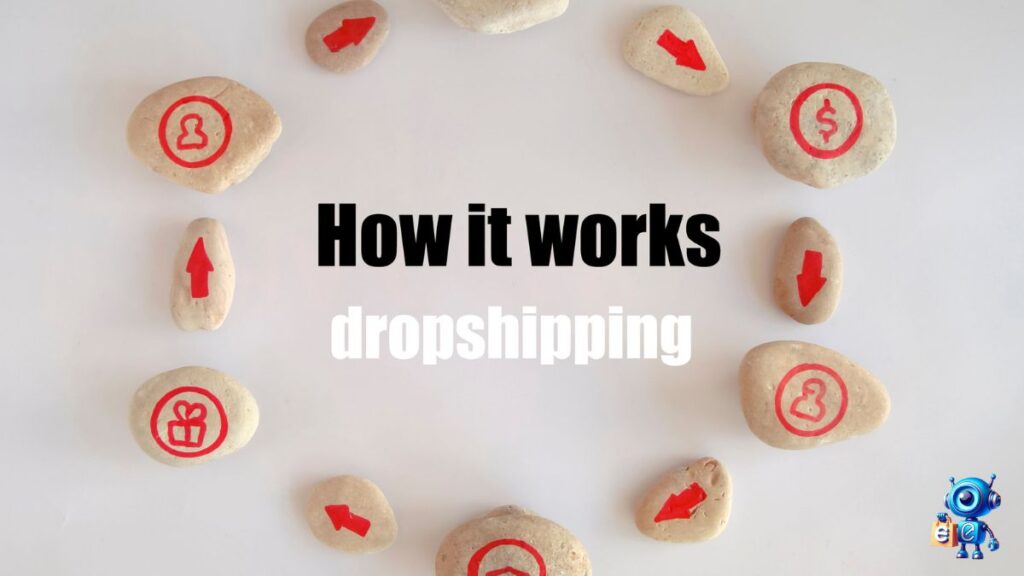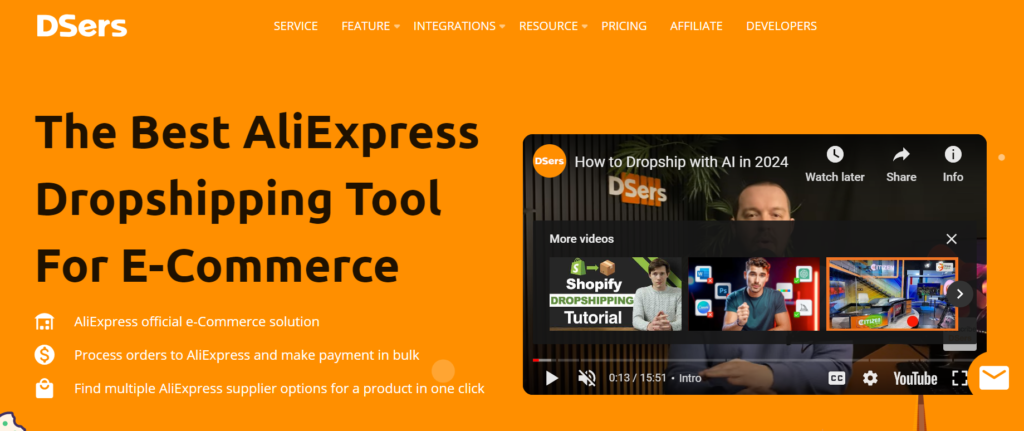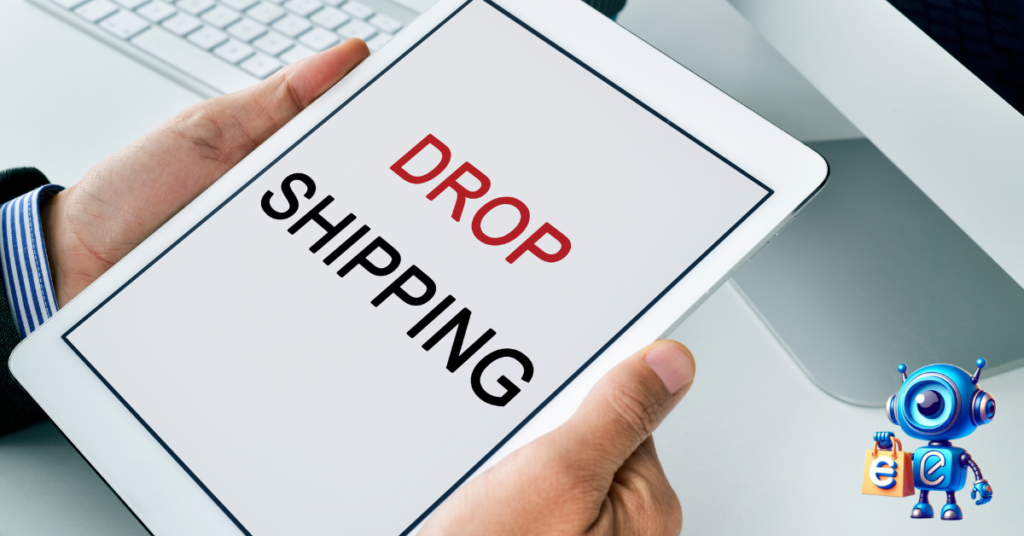E-commerce has grown tremendously over the years, especially with the increased global access to the internet. Anyone can buy anything online and have it shipped to them in days.
This has opened up the worldwide market and made it possible for individuals and companies to make money.
Now, one type of e-commerce has made its mark on the internet space—dropshipping.
Dropshipping has been discussed for a while and good reason. It is easier to start, cheap to operate, and profitable.
But what is dropshipping, and how does it work?
Well, if you’ve heard about it or have been researching it, this piece is precisely what you need. It explores everything there is to know about dropshipping, including what it is, how it works, and its benefits and drawbacks.
Table of Contents
What Is Dropshipping?
In simplest terms, dropshipping is an online business that doesn’t require you to own, stock, or ship the products you are selling. Instead, you outsource all these services to a third-party supplier or wholesaler. The supplier has the stock and ships the products directly to the customer upon your request or order placement.

Generally, it is an online order fulfillment business model in which the drop shipper displays products in the store and encourages customers to place orders. Once an order is placed, the drop shipper leaves the task of fulfilling that order to the supplier.
In this light, the dropshipping business becomes cheap for drop shippers to operate. Why? They don’t require to have capital to buy and stock products or incur the cost of shipping.
Therefore, dropshipping could be a great choice if you are looking for an affordable and profitable business to start online.
How Does Dropshipping Work?
The dropshipping process is simple. It starts with a contract between a drop shipper and a supplier. The contract ensures customers can receive the product or products without delay when ordering.
So, how does this work?
Generally, the first step for a drop shipper is to open an online store. This can be done on a personal website or from popular e-commerce platforms like Shopify, BigCommerce, Wix, Woocommerce, etc.
Start shopify Free Trial Today


Armed with a storefront, the drop shipper can find the products and suppliers they want to sell. From here, all that’s required is getting the target audience to see the displayed products and place orders. Automated marketing campaigns through a platform like EcommerceBot ensure the target audience receives the ad messages captivatingly.
But how does the order fulfillment process work? It follows these simple steps:
- Customers see a product, likes it, and places an order on the online store
- The store automatically sends this order to the supplier
- The supplier prepares and packages the product
- The order is shipped directly to the customer from the dropshipping supplier.
As you can see, the drop shipper does not stock or ship the products. In other words, the drop shipper’s main task is advertising the products through its online storefront.
How Does the Dropshipper Make Money?
Seeing that dropshippers don’t fulfill the orders themselves, how do they make money?
Dropshipping is like any other business model: You get products from the supplier or wholesaler at a lower price, sell them at a much higher price, and pocket the difference.
Therefore, in dropshipping, a drop shipper first searches for suppliers offering lower-quality products. They then add a markup based on their cost calculations and place the products in their online store at a higher price.
When customers place an order, they pay the price on the storefront. However, the supplier charges the drop shipper at the agreed-upon lower price. Therefore, the drop shipper gets the difference between the supplier’s and the customer’s buying prices.
The lower the supplier price, the better the markup and the more a drop shipper can earn. Therefore, it is crucial to find low-priced but quality products.
Key Players in Dropshipping
For a dropshipping business model to be successful, some key players must work together in tandem. These players include:
The Seller or Dropshipper
The drop shipper is the face of the brand or the products. Customers interact with the dropshipping store, where products are advertised, and orders are placed. Therefore, the drop shipper is an essential player in this business model.
The drop shipper is also responsible for setting the prices and marketing the products. They are also responsible for sales tax or any issues customers may raise concerning the products or shipping process.
The Supplier
In dropshipping, a drop shipper doesn’t stock or ship the products—a supplier does. When an order is placed at the drop shipper’s store, it is sent directly to the supplier, responsible for packaging and shipping the product/products to the customer.
The supplier then acts as a link between the manufacturer, the drop shipper, and the customer. They source the products from the manufacturer and ship them to the end customer when a drop shipper orders.
The suppliers are usually wholesalers who buy products from the manufacturers and sell them to retailers. They typically don’t sell to the final customer but offer dropshipping services.
Manufacturers
These are the people or companies responsible for producing the products. They sell the products in bulk to wholesalers and retailers. Some manufacturers also offer dropshipping services, although they usually require you to make significant bulk purchases.
As such, most drop shippers go with wholesalers as their suppliers as they allow smaller quantity purchases.
Main Benefits of Dropshipping
Why has the dropshipping business model become so popular? What are the pros of starting such a business?
Minimal Upfront Capital and Overhead Costs
When starting an e-commerce or brick-and-mortar business, you need substantial upfront capital. This is because you need to buy inventory and pay for storage. The store owner is also responsible for shipping the products.
This is quite different in dropshipping. Here, the store owner doesn’t buy the inventory and doesn’t incur storage costs. The drop shipper buys the products once customers order and pay for them. Even better, shipping logistics are also left in the hands of the supplier.
This makes dropshipping one of the cheapest businesses to start, especially for those with budget constraints. The main cost of operation here comes in marketing the store and products.
Less Risky
Dropshipping is a low-risk business model. As a drop shipper, you don’t stock or ship products, eliminating much of the risk associated with operating a business.
In other words, you are not using your money to order or ship the products to the customers. This leaves you without the risk of losing money. You only use your money upfront when advertising the store, paying for the storefront, and buying tools that streamline your operations, like EcomerceBot or DSers.
Easy to Run
Dropshipping is easy to run when compared to other types of business. Why? With drop shipping, you don’t have to worry about:
- Managing stock or incurring warehouse charges
- Packaging and shipping orders
- Returns or inbound shipments
- Inventory tracking for accounting reasons
All these make it relatively easy to run and manage a dropshipping business.
Flexibility
Dropshipping is flexible as it’s not bound to location or time constraints. As long as you have your online store and reliable internet connection, you can sell to anyone, almost anywhere around the globe.
The only thing you must ensure is proper communication with suppliers and customers. Suppliers guarantee that customers get the right products in good time. On the other hand, efficient customer engagement helps build trust and more sales for your store.
Scalability
Scaling your dropshipping business is much easier than any other e-commerce or brick-and-mortar business. With other companies, more orders mean more work and costs for you despite the increased revenue. However, more orders in dropshipping means more money with no additional work.
When customers place more orders, the suppliers handle additional work. They fulfill the order, including packaging and shipping the products. Therefore, you can increase your marketing efforts to grow your business without worrying about additional costs and work.
Drawbacks of Dropshipping
Every business has its good and bad sides. The dropshipping company is typical. Here are the not-so-good aspects of dropshipping.
Problems with Inventory
Dropshipping involves sourcing products from numerous suppliers. These suppliers are also constantly fulfilling orders from other retailers or merchants. Keeping daily track of every product’s inventory can sometimes take time and effort.
But that shouldn’t worry you too much. Advancements in technology have made some of these processes incredibly easy. For example, you can adapt numerous e-commerce automation tools to streamline your store’s processes, including order and inventory tracking.

For example, the DSers app enables you, as the drop shipper, to see what’s happening to the supplier’s stock without asking. This way, when the stocks get too low, you can set the stock to zero or unpublish the product from your store. This prevents a scenario where customers place orders, but the inventory is zero.
Low-Profit Margins
Profit margins in dropshipping can be significantly low. This is mainly because of the high competition present in this business model.
The truth is, since dropshipping requires minimal capital to start, everyone is doing it. This increases competition, which, in turn, makes many drop shippers lower their prices significantly. And since they didn’t incur many costs when starting up or as overheads, they are satisfied with merger profits.
Customers will always compare the prices at different stores. So, if yours are too high, selling might be complex.
The only way to overcome this is to offer quality products and efficient customer engagement and support.
Try EcommerceBot’s Omnichannel Chatbot.
Shipping Problems
Dealing with multiple suppliers makes the shipping process pretty complex, and it also means that you have no control over it.
For example, if a customer orders several products, you might need to source them from different suppliers. This means that the shipping costs and durations might be different. Therefore, customers may have to wait longer for some products, while others they ordered the same day arrive earlier.
Communicating this to customers may be a challenging thing to do.
Supplier Mistakes
As mentioned earlier, the drop-shipper is the face of the brand or product. This means that any mistake a supplier makes will fall on you.
Even the best suppliers can make errors in quantity, quality, or type of product shipped. When this happens, the supplier is not to blame; you are. If it’s a severe case or occurs regularly, it can quickly tarnish your store’s reputation.
A bad reputation leads to low sales and, subsequently, minimal profits.
What Is the Difference Between E-commerce and Dropshipping
Both drop shipping and e-commerce are online businesses. Dropshipping is a type of e-commerce.
However, the difference between a dropshipping model and an average e-commerce model is how they deal with inventory and order fulfillment. In e-commerce, the store owner holds inventory, pays for warehousing, and is involved in shipping the products.
On the other hand, a drop shipper doesn’t hold any inventory or engage in product shipping. They direct the orders to suppliers who, in return, package and ship the products to the customer. In essence, the supplier fulfills the order in dropshipping.
How to Start Dropshipping at 14
The first question we must answer is: How old must you be to start dropshipping? Well, the answer is 18 years and above. This is because most legal contracts require you to be 18 or older before entering one, and most e-commerce platforms like Shopify require you to be 18 or older.
However, this doesn’t mean 14-year-olds are entirely locked out of the dropshipping business. There is a way out.
14-year-olds and other teenagers can start a dropshipping business, but it should be done under the supervision of a parent or an adult. The adult can then sign the contacts and make payments for e-commerce platforms or advertising campaigns with strict age limit requirements.
Frequently Asked Questions
Do you need an LLC for dropshipping?
Generally, you don’t need an LLC to start dropshipping. You can quickly start your business as a sole proprietor or partnership. However, an LLC is recommended as it protects your assets in case of financial or legal issues. Also, many, including suppliers, will be comfortable working with LLCs as they offer more protection.
Are pre-built dropshipping stores worth it?
Pre-built stores are an excellent option, especially when they align with your goals and interests.
These stores usually have invaluable assets, including social media accounts, marketing materials, and customer data. These help you get started quickly when building your dropshipping business.
Is Temu a dropshipping company
Temu is not a drop shipping company, so you cannot list products from Temu on your store. Typically, Temu is among the popular e-commerce marketplaces, connecting sellers and buyers. Although it is a Chinese company, its operations are in Boston.
Is dropshipping oversaturated
The market is saturated when you look at the number of dropshipping businesses. However, even with so many dropshipping companies, there is still room for more. This is because there are more than enough products available for dropshipping. If you get the right products and employ effective strategies, you can make it big in dropshipping.

